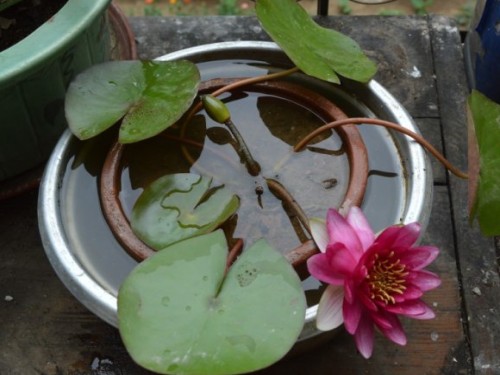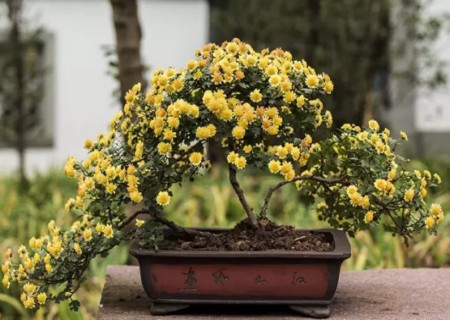How to plant water lilies in pots? How to plant potted water lilies
Raising a pot of water lilies on the balcony not only beautifies the environment, but also enhances sentiment. Generally, water lilies cultivated on the balcony are small varieties with small flowers and leaves. Small potted plants can even be cultivated on the balcony or windowsill. Chic water lily leaves and exquisite beautiful sleeping lotus flowers float on the calm water, with some special interest.
Family planting cold-tolerant sleeping lotus should choose medium and small plant types, planted in balconies, balconies, gardens and other places, together with potted terrestrial plants, to create a scattered and orderly natural ecological landscape. The selection standard of varieties should be bright and beautiful flowers, elegant flowers, pleasing to the eye, more flowering, long florescence, and easy reproduction and preservation.

Potted water lilies are generally cultivated in water culture, but they can also be cultivated in soil. Can be placed in the office, bedroom, living room, balcony or yard. Because it likes the sun, as long as it ensures its light, ventilation and fertilizer, it basically does not need to spend much energy on management.
1. Selection of basin
Flowerpots are decided according to personal preferences and the overall style of the family. They can be transparent pots or clay. Try to choose a flowerpot with an outward opening, and the wider the opening, the bigger the flower. The deeper the flowerpot, the longer the flowering period.
Can also prepare a large and a small two basins, large basin caliber 40cm~50cm, deep 40cm~45cm small basin caliber 25cm~35cm, deep 30cm. Small pots are used for planting and large pots are used for placement and culture. Plant water lotus tubers in a small basin, the planting method is the same as that planted in the pond, put it in a large basin after planting, and fill it with water. Put the basin in the leeward to the sun to cultivate, the outside of the large basin is actually equivalent to a small pool, it can move the place at any time as needed.
2. Distribution of soil
Potted water lilies can also be cultivated in water or soil. When choosing soil, it is best to choose flower soil with high viscosity.
3. Reproduction
The ramet or sowing method can be used for reproduction. In the split method, the rhizome is generally dug up in late March, cut into small segments 10-15 cm long, and then planted. The sowing method is sown in March-April, the temperature is kept at 25-30 degrees, and it can germinate in about half a month. When the seedlings have 3-4 true leaves, they will be planted in pots.
3. Fertilization
Before planting water lilies, a little long-acting fertilizer can be placed at the bottom of the basin. During the growing or flowering period, about 1.5-2.5 months, long-acting fertilizer or root fertilizer should be added about 3-5cm away from the corm. Pay attention to no more fertilization after the end of September, because it has been gradually autumn, water lilies will also enter the dormant period, fattening, but will cause rotten roots.
4. Change the basin
Potted water lilies should be changed every spring. When changing pots, it is best to choose flowerpots with an inner diameter of more than 30 cm, so that the plant can be fully extended and the growth and development is normal. Make the leaves big and the flowers big. The basin soil is made of pond soil or vegetable garden soil, and a few pieces of hoof or broken bones are first put into the bottom of the basin as base fertilizer. After planting the rhizome, cover it with a layer of topsoil such as river sand and field mud, pour enough water, and then soak the basin soil into the water after budding. The water surface is slightly higher than the soil surface and placed in a well-ventilated and sunny place to maintain the water quality.
There are two most important elements in growing water lilies: light and temperature. Whether the light is sufficient or not determines whether the water lily can grow well. The more abundant the light is and the warmer the climate is, the better the water lily will grow and the shorter the dormancy period will be. So if you want to grow water lilies, you have to evaluate whether you can provide a place with plenty of light. With the temperature, the leaves stretch, water should be added gradually. Summer growth is exuberant, the water level is a little deeper, up to 20 cm deep, but can not submerge the leaf surface. If you want to change the water, it should be done in the early morning.
Time: 2019-05-24 Click:
- Prev

Cultivation and Management of Golden Bean Bonsai
Jindou is native to the hilly areas of southern China. It grows slowly and is easy to shape. It is a good material in the hands of bonsai artists. Golden bean tree is strong in nature, and it is an ideal bonsai tree species for both leaf, stem and fruit appreciation. The ornamental value of the hanging fruit period is very high, and it is regarded as a precious bonsai in Japan. Golden bean is an ornamental fruit plant.
- Next

Cultivation techniques of Chrysanthemum Bonsai
Chrysanthemums have been loved by people since ancient times. Different from other flowers, chrysanthemums bloom proudly in late autumn and conquer the hearts of many people with noble and elegant flowers. Chrysanthemum bonsai, also known as bonsai chrysanthemum, is based on chrysanthemum, with dead wood stakes, rocks and other materials.
Related
- Fuxing push coffee new agricultural production and marketing class: lack of small-scale processing plants
- Jujube rice field leisure farm deep ploughing Yilan for five years to create a space for organic food and play
- Nongyu Farm-A trial of organic papaya for brave women with advanced technology
- Four points for attention in the prevention and control of diseases and insect pests of edible fungi
- How to add nutrient solution to Edible Fungi
- Is there any good way to control edible fungus mites?
- Open Inoculation Technology of Edible Fungi
- Is there any clever way to use fertilizer for edible fungus in winter?
- What agents are used to kill the pathogens of edible fungi in the mushroom shed?
- Rapid drying of Edible Fungi

